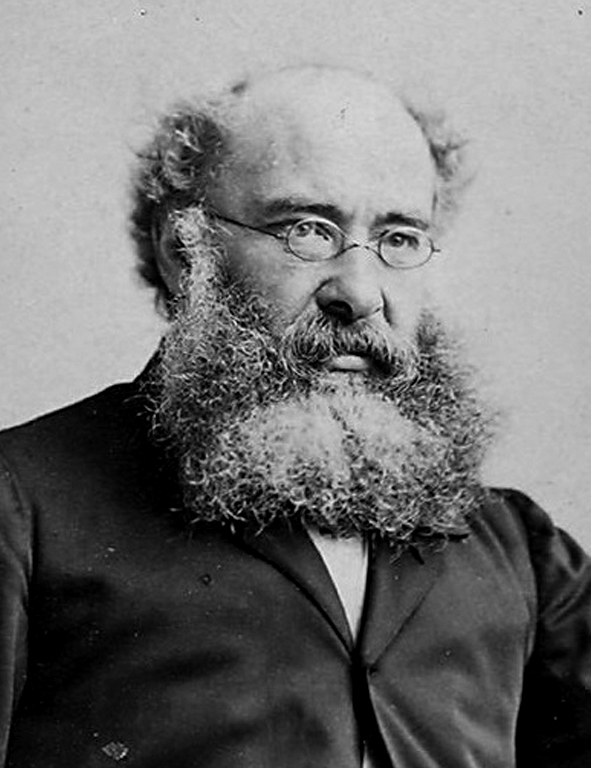One of the most successful novelists of the Victorian era, Trollope figured out a daily writing routine that allowed him to write write books with astounding speed.
Beginning with his first novel in 1847, he wrote 47 novels as well as many short stories, nonfiction books, and plays over the course of his 35 year career.
Trollope achieved his incredible productivity by writing in 15-minute intervals for three hours per day.
Even more impressive perhaps, is that he did all this while working a demanding job as a post office inspector. A job requiring him to travel often and keep a busy schedule.
That meant that when he sat down to write, he needed to make sure he met his daily word count.
What is the 15 Minute Anthony Trollope Routine
Due to his demanding job, he had to find the time, so Trollope began writing at 5am, the Trollope Society reports:
Trollope wrote for three hours every morning from 5am – 8am, and then went to work.
His strategy is best explained in Mason Currey’s book, Daily Rituals
It had at this time become my custom,—and is still my custom, though of late I have become a little lenient of myself—to write with my watch before me, and to require of myself 250 words every quarter of an hour…
This division of time allowed me to produce over ten pages of an ordinary novel volume a day, and if kept up through ten months, would have given as its results three novels of three volumes each in the year…
Anthony Trollope
Ultimately, Trollope’s timed writing sessions were the key to his prolific output.
This may seem simple at first however there is more to his method than meets the eye:

No Multitasking
Trollope’s timed strategy proved so effective because he committed to turning off all distractions during this writing sessions. He forced himself to concentrate on only the the writing of those 250 words.
This meant absolutely no multitasking.
I’ve written about the myth of multi tasking and how it actually get less done here.
But for a summation: According to this Wall Street Journal article, “It takes more than 25 minutes on average to resume a task after being interrupted.”
Even worse, “It takes an additional 15 minutes to regain the same intense focus or flow as before the interruption.”
It quickly becomes apparent how ineffective multitasking really is.
Small Milestones = More Momentum
Writing a book is a massive endeavour. Even writing a chapter is gigantic.
However, instead of measuring his progress based on the completion of chapters or books, he measured his progress in 15-minute chunks. This method allowed Trollope to enjoy feelings of satisfaction and accomplishment daily while continuing to work on the large task of writing a book.
I find this works for two reasons:
- This enables tiny measures of progress which helps to maintain momentum over the long term.
- Once positive tasks (no matter how small) are being completed, your day begins to take on an attitude productivity, efficiency and effectiveness. And as the saying goes, how you start your day leads to how you will finish it.
Completion Quickly and Early
The 15-minute writing block was a thought out system that allowed him to “get to finished” faster while still working on a big task.
ie. He received the long-term value of working on his most important things with the immediate payoff of finishing each time block daily.
A small daily task, if it be really daily, will beat the labours of a spasmodic Hercules. It is the tortoise which always catches the hare.
Anthony Trollope
How We Can Implement Timed Writing: The Pomodoro Technique
An Italian college student named Francesco Cirillo invented the technique in the 1980s. Constantly distracted during his study time, he was looking for something to help him focus.
Cirillo discovered a 25-minute kitchen timer in the shape of a tomato, and the Pomodoro technique was born (Pomodoro is the Italian word for tomato).
Here’s how it works:
- Decide on a task to be completed.
- Set the timer to 25 minutes (or any short interval).
- Work on the task until the timer sounds.
- Take a short break (3-5 minutes).
- Every four “pomodori” take a longer break (15–30 minutes) until the task is completed.
Conclusion
Trollope understood that he only had a limited amount of time to devote to writing. His hours were precious, and he needed to use them wisely.
The routine he developed and disciplined writing habits he cultivated allowed him to achieve a prolific amount as an author.
Measure your progress in the short-term but work for the long-term.
Following the Anthony Trollope Method which allows for rapid feedback while tackling a bigger task and still providing a sense of achievement ensures that we can continue to move in the right direction on our most important tasks.
